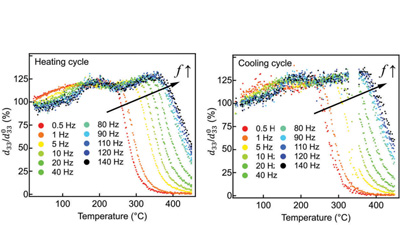In collaboration with co-workers from China, Germany, Australia, and Switzerland, Prof. dr. Tadej Rojac from the Electronic Ceramics Department has recently published a paper in the journal of Advanced Functional Materials titled Piezoelectric properties of BiFeO₃ exposed to high temperatures. The study reports on an unusual phenomenon in ferroelectric bismuth ferrite (BiFeO₃), which has been extensively studied in recent years due to its high Curie temperature (TC = 830°C) and therefore its potential for high-temperature piezoelectric applications. The researchers discovered that the piezoelectric response, which disappeared at temperatures above ~400°C, was recovered upon cooling of the material. In contrast to the commonly assumed explanation related to thermal depoling of the ceramics and thus permanent loss of piezoelectricity, in this case, it is a reversible phenomenon stemming from the thermally activated electrical conductivity of the ferrite. The discovery of this phenomenon has paved the way for optimizing the poling conditions of BiFeO₃, which may have practical significance in the development of BiFeO₃-related environmentally friendly lead-free piezoceramics.

